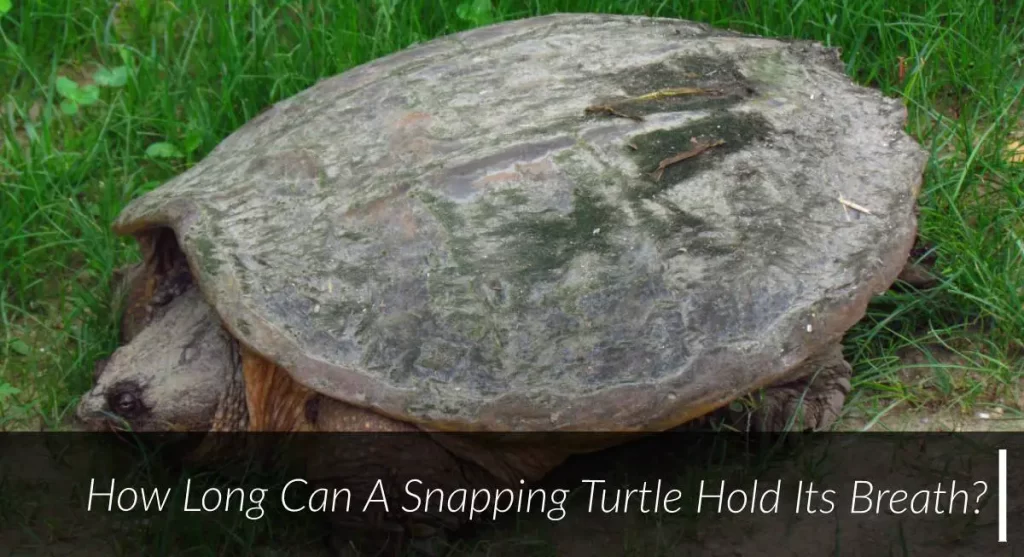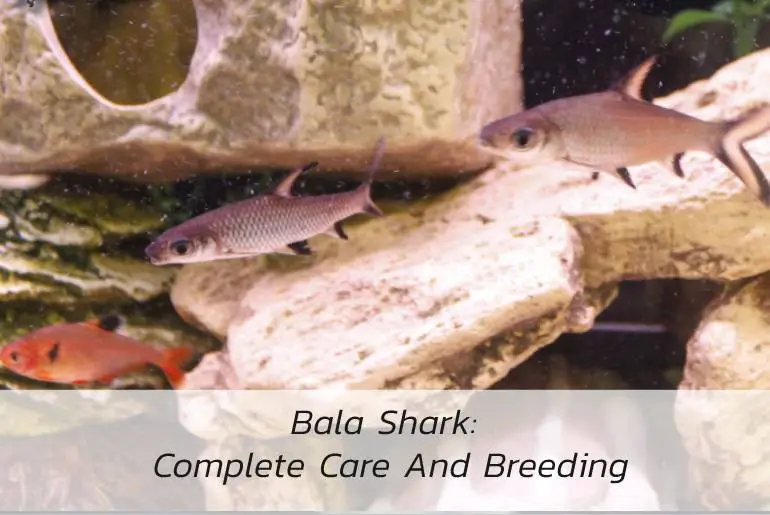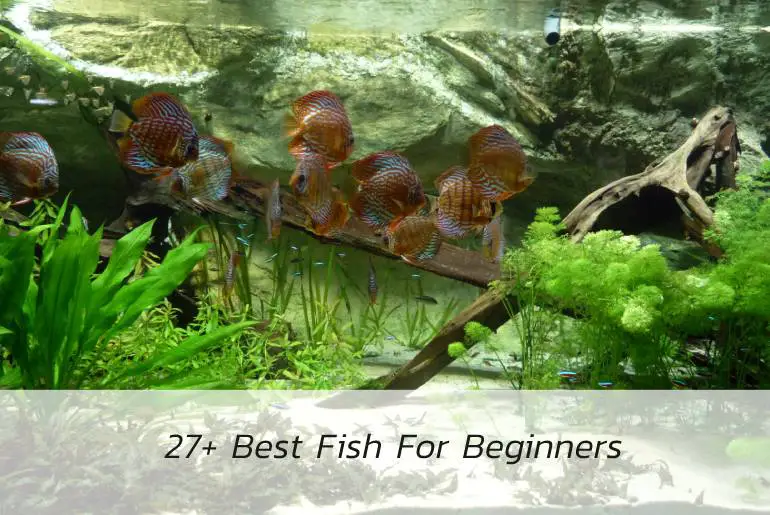Have you ever heard of a fish that has a keyhole-like marking on its body? If you have not, here is a proper guide about the keyhole fish. I am sure you’ll find the keyhole fish very unique.
The keyhole cichlid is a timid kind of fish that is peaceful, shy, and good-tempered. Due to its reclusive and shy nature, it is most suited for a community of non-aggressive species. Likewise, they do not harm the plants and aquarium decorations. These are the main reasons why you should add keyhole cichlid to your aquarium.
To accommodate its shy nature, the keyhole cichlid needs an environment that has plenty of hiding spaces. Additionally, this is an easy-to-care species that tolerate a range of water states and eats most anything.
| Category | Rating |
| Family | Cichlidae |
| Scientific name | Cleithracara maronii |
| Lifespan | 7-10 years |
| Color | Cream, yellow tint |
| Tank setup | Slow-moving water, hiding spots |
| Tank type | Community of fishes |
| Minimum tank size | 20 gallons minimum tank size |
| Group size | 6 to 8 (minimum 2) |
| Temperature | 72°F to 79°F. |
| pH | 5.5 to 8.0 |
| Temperament | Peaceful |
| Diet | Omnivorous |
| Care level | Easy |
| Breeding | Egg spawning |
| Useful place in tank | Middle |
To keep this fish as a pet, you need to consider certain things that will be described below:
Appearance, Behavior, and Biology
Among the cichlid species, the keyhole cichlid is the most peaceful one. They need plenty of space and shelter to decrease their stress. It is well-known for its calm and peaceful nature.
This species is a timid and fearful one.
The appearance of Keyhole Cichlid
As compared to other cichlid species, the keyhole cichlid has a more subdued coloration. Its body color varies from yellow to light tan. The coloration becomes lighter as they mature.
You can find a distinguishing feature. i.e. a black spot just behind the midline of their body that resembles a keyhole.
They have a black, vertical line spanning across the head and eye. Their dorsal and fins are elongated.
The behavior of Keyhole Cichlid
Keyhole cichlid is a peaceful fish as they are non-aggressive and do not tear up aquarium plants. However, you can sometimes see its aggression during the breeding time. To control aggression, you should make plenty of shelters and hiding spaces during this phase.
These cichlids can get startled easily. When stressed, the keyhole marking stretches out across the body and the fish turn brown and blotchy. Adding to this, if they feel threatened, they are able to camouflage themselves to match the surrounding color or even in a hiding space.
Natural Range
The Cichlids are found in tropical America, mainland Africa and Madagascar, and southern Asia. The natural range of this fish is around the Rio Orinoco basin in Venezuela, eastwards through Guyana and Suriname to the Ouanary River, in eastern French Guiana, and the rivers of Guyana in South America.
But the older records have shown that this species was also present on the island of Trinidad, but it’s not clear if they are still residents of that place.
Size
The keyhole cichlid is the smallest cichlid among all. Keyhole cichlids can reach up to 4 to 4.9 inches. Males grow a bit larger than females and have had longer anal fins and dorsal.
Lifespan
They are known as long-lived species with a lifespan of 7 to 10 years. Fish’s longevity is determined by the tank’s condition and a proper diet.
Temperature
Keyhole cichlids adjust in most water conditions. However, the best water condition is slightly soft or moderately hard water. You should keep the water temperature between 72°F to 79°F. Your tank’s pH should be between 5.5 to 8.0. Install a heater to maintain the perfect temperature.
Tank Size
Despite being smaller than other cichlid species, it needs ample space to feel confident. The minimum tank size should be 20 gallons. Make sure you do not forget to invest in the security cover as they are known to jump out of the tank when they get scared.
Tank Condition
These fishes need adequate shelter inside the tank. The shelters can be stones, flower pots, ceramic tubes, snags, and coconut shells. A maximum number of shelters helps keyhole cichlids to decrease stress.
As sudden movements inside and outside the tank will startle keyhole cichlids, maintaining the tank condition is a must. To avoid the buildup of ammonia and nitrates, clean your tank regularly.
Aquarium Decorations
To make this fish feel safe, make sure you keep plenty of plants and rocks to find a space to hide. As these fish do not dig in the substrate, feel free to keep live plants as well.
Additionally, put some flat stones as they will use these for spawning while breeding. Along with that, add some floating plants as these will dim the lighting in the water. Black water gives the keyhole cichlids a feel like home.
Some of the flat stones that I recommend are:
Do not forget that harsh lighting should not be used for this fish.
Lighting
If you are thinking these fish need more bright lighting, then you are wrong.
You might be thinking why?
Since the moderate or dim lighting makes the keyhole cichlids feel at home, you must give them the amount of light that mimics the light in their natural habitat.
Filtration
Since the keyhole cichlid lives in slow-moving water, the filtration should not be that strong, or else your fish will get stressed.
Penn Plax Aquarium Cascade Canister Filter is a good option for such a cichlids tank.
Tank Mates
Keyhole cichlids need a company for more comfort and ease. These fish feel at ease in a community with their own non-aggressive species.
They should be kept in a group of six or eight. Tankmates should be of the same size and should share the same water taste. Suitable fish is Docile cichlid species, Cory catfish, Hatchet fish, and Giant danio. The presence of such fish help encourages these shy keyhole cichlids to go out and open a little more.
You should avoid smaller fish, such as tetras, in a community with keyhole cichlids as they can be mistaken as food.
Diet And Food
Keyhole is an omnivore and eats whatever you put in the aquarium. You can feed them frozen, dried, or live foods.
They eat frozen or live foods such as daphnia, brine shrimps, bloodworms, and dried food such as pellets, green flakes, etc. They will also eat vegetables that are cut into bite-sized pieces. Good options are peas, cucumber, and spinach.
You can get the following food for the keyhole cichlid:
- Omega one pellets
- Ocean Nutrition Instant Baby Brine Shrimp 0.7-Ounces (20 Grams) Jar
- Omega One Freeze-Dried Blood Worms, 0.96 oz
- 200 Live Daphnia by Aqua L’amour
- Hikari Bio-Pure Freeze Dried Daphnia for Pets, 0.42
You can feed this fish one or two times with larger meals or with small portions two or five times per day. The meal should be proper for your fish’s mouth.
Their feeding should be made up of flakes or pellets unless you intend to breed them. In the breeding process, they should mainly be fed live or frozen foods.
Differences: Male Vs Female
It is difficult to tell the differences between males and females for juveniles and young species. But as an adult males are comparatively larger and have a longer extension or dorsal and anal fins.
Breeding of Keyhole Cichlid
Adult keyholes form pairs naturally and stay as a pair for life. Flat stones or wide leaves serve as a place for spawning while breeding.
For breeding, a separation from the community tank may be best after they pair up. This will prevent other fish from eating the eggs. If they are sole species, separation is not needed.
The female will stay at the spawning site while the male will guard the territory. It lays up to 300 eggs. Keyhole cichlids eat their young due to two reasons:
- In case the keyhole cichlids are disturbed.
- Inexperienced pairs eat their first batch of eggs.
Eggs hatch within 2-5 days. Parents will fan oxygenated water to the eggs for increasing the oxygen. Similarly, they also remove unfertilized eggs from the area.
A breeding Technique That We Recommend
Separate a batch of juveniles in a 50-gallon tank provided with plenty of flat stones or wide leaves. The presence of these makes them easier to breed.
The best 50-gallon tank is SeaClear Acrylic Combo Aquarium without a doubt.
You need to make sure to feed them plenty of food. If you do so, they will focus more to induce spawning rather than finding food.
After the reproduction process takes place, you need to wait for a maximum of up to 10 days, until the fry can freely swim.
Once the fry is freely swimming, separate them to the 10 gallons of the tank. This tank should not have any decorations and substrate so that the fry can eat freely.
Also, keep in mind that you should use a sponge filter to not let any baby fry get stuck.
Keyhole Cichlid Diseases
Common keyhole cichlid diseases that keyhole cichlids suffer from are:
- Fin rot
- Ichthyophthirius multifiliis
- Flagellates
Fin rot
Fin rot is a case where the fins of this species rot because of a bacterial infection. This is due to incorrect water conditions. Mostly dirty water and the wrong pH level causes the fin to rot. It can also be caused due to stress.
Keyhole Cichlid shows signs of suffering from the fin rot. The condition of their fins becomes weak and looks milky transparent. They behave weakly. Moreover, the mold begins to cover the fin and speeds up the rot.
How to prevent fin rot?
To prevent this, you should quarantine the fish first. Then, by increasing the temperature of the water, add salt to it. Also, use antibacterial medications.
Ichthyophthirius Multifiliis Pathogen
It is a ciliate that enters through the keyhole’s skin and can survive 8 weeks under an adequate temperature.
They swim off at 1 mm after getting detached from the cichlid. Then, until it needs to re-attach to the host, the pathogen continues to multiply. It spreads fast to other species in the tank.
The signs your Keyhole Cichlid have Ichthyophthirius Multifiliis are the causing of white spots all over the body and breathing problems. You can see them as itchy and rub their body against their shelter. They may also have whitish spots all over the body, that includes the fin and gills. They may also lose weight.
How to prevent Ichthyophthirius Multifiliis Pathogen?
The perfect cure for Ichthyophthirius Multifiliis is malachite green and formaldehyde.
You can also use methylene blue for the treatment of mild cases. Make sure to give the medication through the water filter.
Surplus Flagellates
Surplus Flagellates are microorganisms that grow in the intestine of the keyhole cichlid and cause issues by multiplying excessively.
Signs of having Surplus Flagellates can be a weakness, white threadlike dropping, change in color, and loss of appetite.
How to prevent Surplus Flagellates?
A dose of metronidazole is a great remedy for treating the surplus flagellates. Metronidazole is active against the reproduction of anaerobes. It diagnoses the disease that led to the multiplication of flagellate.
Use of the API MELAFIX Freshwater Fish Bacterial Infection Remedy 16-Ounce Bottle can solve the issue.
Frequently Asked Questions
Are the keyhole cichlids aggressive?
No, keyhole cichlids are not really aggressive fish. They are peaceful with their own species with similar sized and peaceful temperaments.
However, you can sometimes see its aggression during the breeding time.
What can you keep with keyhole cichlids?
Keyhole cichlids need a company for more comfort and ease. These fish feel at ease in a community with their own non-aggressive species.
Tank mates should be of the same size and should share the same water taste. Suitable fish is Docile cichlid species, Cory catfish, Hatchet fish, and Giant danio. The presence of such fish helps encourage their shy nature to go out and open a little more.
What do the keyhole cichlids eat?
Keyhole cichlids are not fussy eaters. They eat anything you throw in the tank.
Moreover, Keyhole cichlid eats frozen or live foods such as daphnia, brine shrimps, bloodworms, and dried food such as pellets, green flakes, etc. They will also eat bite-sized cut vegetables. Good options are peas, cucumber, and spinach.
Can you keep a single keyhole cichlid?
The tank size should not be less than 20 gallons for a single cichlid. However, you should avoid keeping a single cichlid because they are monogamous and pair for life.
A minimum of 55 gallons is needed for a couple of keyhole cichlids
How can we care for the fry?
Eggs of keyholes hatch in about three to five days. After they hatch, parents will care for their young for six months. You can feed newly hatched brine shrimp or infusoria to the fry.
How big do keyhole cichlids get?
Keyhole cichlids are the smallest cichlid species. They can reach an average of 4 to 4.75 inches (10 to 12 cm).
Are keyhole cichlids peaceful?
Yes, they are peaceful fish and get along easily with other cichlids of the same temperament,
such as Green or Gold Severums and Rivulatus. But, in the breeding period, they become aggressive while protecting their eggs.
How big do keyhole cichlids get?
The keyhole Cichlids don’t get very large. Keyhole cichlids can reach up to 4 to 4.9 inches. The male Cichlids have a size between 90 to 110 mm and the female Cichlids have a size between 55-75mm.
Do keyhole cichlids eat plants?
Yes, the Keyhole Cichlids are omnivores and regularly eat any type of commercial food as well as live worms and brine shrimp.
They also eat vegetables that are cut into bite-sized pieces. Good options are peas, cucumber, and spinach.
Conclusion
Keyhole Cichlids are the cichlid species that are suitable to keep in a home aquarium or in a community tank. They are peaceful and non-aggressive. You need to keep in mind that you are keeping them with compatible mates.
Proper filtration of the water is required. Offering them with cleaned aquarium water and providing them a suitable environment for their living is very crucial.
You should keep plenty of plants and more hiding spaces for this species of cichlid.
Make sure you are giving enough shelter and hiding spaces in the aquarium to help your fish hide and relax.






